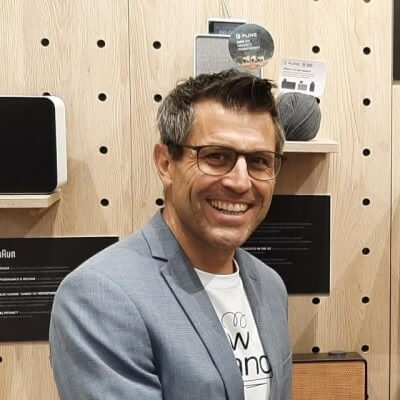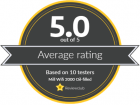The Art of Commerce: Part II
Innovative Formats
The ongoing pandemic highlights the challenges e-commerce faces. We all miss our brick and mortar stores and don’t want to think of a world without strolling through pedestrian areas. While e-commerce without a doubt increases transparency and facilitates access to information, it also feels transaction-driven and lacks the natural urge to seek assistance, communicate and stimulate the senses the way a physical store does.
Last time, we identified 5 key trends that accelerated or even emerged during the pandemic, and we will look at each of them to better understand how they could shape CE retail moving forward.
Social shopping
The pandemic has been a huge emotional rollercoaster for consumers, brands and retailers alike, highlighting the importance of empathy and experience. While live-streaming events had experienced growth in China even before the pandemic, more and more brands have now tapped into this promising new feature to connect with consumers in other parts of the world.
Long seen as a “midnight pastime” and actually having been a sizeable industry for many years, TV shopping channels know the power of remote, yet human connection and good sales explanation. The onset of the internet and social media propelled the popularity of live-streaming and elevated the shopping experience into new spheres.
Numerous platforms are available – from YouTube Live to Facebook Live to Instagram Live to Twitch and Periscope all the way down to Amazon Live. Walmart, for instance, hosted its first live shopping event via TikTok, and Chinese platform Taobao is leading the way with its many live sales events.
Brands like Adidas, Estée Lauder and Prada have already joined the adventure, and now it remains to be seen how they leverage the power of social selling. What is certain is the existence of a very clearly structured pitch:
- Create awareness
- Awaken needs
- Increase urgency
- Weigh decisions
- Resolve remaining risks
Similarly, a huge potential for offline shopping can be observed, and it’s more than just “Click & Collect”. McKinsey sees several new technologies that have reached a tipping point and are set to spill over onto the retail floor. In their example, customers walk into a store and are recognized by either opt-in face recognition or WIFI.
Smart shelves will direct them to the product they put into their shopping cart at home. During the shopping experience, personalized promotions will pop up, indicating fitting products and discount campaigns based on previous purchases. The smartphone can be used to receive additional product information such as content origin or nutrition.
There would be no need to check out physically as RFID scanners and cameras have already identified the items in the shopping car and debited listed credit cards as customers leave the store. Doesn’t sound too far off, does it?
Made to measure
DTC allows more intimacy with customers as well as completely new manufacturing models. MyMüsli started the trend in Germany, and many have followed suit. It is a well-known secret that bread making soared during the pandemic and, naturally, so did bread makers. Did you know that manufacturers such as Lizza seized the opportunity and started offering customizable bread doughs?
But made to measure doesn’t stop with food items. Brands like Kygo have demonstrated that customization is new frontier for accessible headphones and audio products as well. The XELLENCE headphones allow you to conduct a sound test with the buds on in order to optimize what volume and EQ settings will sound best to you.
Conversational commerce
Human connection is always a factor when it comes to shopping experiences. In order to free up resources of shop assistants, conversational commerce will be less transactional and more meaningful. Governments will provide incentive to shop locally and return to city centres, while brands will increasingly create digital touchpoints.
One such feature is the HeyOBI App from 2019, which connects you to an expert via video call to talk through your DIY plans. That way, you can show your garden or home project to someone who understands what they’re looking at and explain what you’re envisioning for the makeover.
Due to the pandemic, video calls have become an everyday thing for people in home office as well as family gatherings and virtual beer sessions.
We will likely see more such developments, especially in retail industries like interior design. A similar application was introduced by Burberry with the R Message system, which allows invite-only customers to directly text in-store staff, who in turn can access information like date of birth and shopping habits to tailor the experience.
But the fashion icon takes the experience one step further. In Burberry’s virtual flagship store, you can walk through Tokyo’s 5,800 m² in a Google-Maps-style-setup by clicking through static images of the store. Clicking on individual products will give you more information as well as a direct purchasing option.
Actor Elaiza Ikeda even presents the brand’s top items in dedicated video clips to enrich the shopping experience. In theory, this sounds all good and well, but since the idea is to replicate the in-store approach, the attempt might be doomed to fail. Leaving behind the physical limitations of a store (or even reality) and getting customized rooms based on previous shopping behaviours would make it a much richer experience and play with the strengths of the medium.
Using gaming engines would give movements in the room a more natural feel and be a step up from photo-based presentation. Give it two years’ time, add a next-generation virtual reality headset, and you’ll start seeing the interactive potential of the online shopping world.
Obviously, access to product information is one of the benefits of the internet. However, technical details and numbers do not replace the feeling of actually trying out a product at a brick and mortar store or at home. Frank Zappa once said, “Writing about music is like dancing about architecture.” Even reviews are subjective and can be misleading.
Lowbeats, a well-known German Hifi magazine, found an interesting way to make the sound of a speaker in a virtual listening room accessible with the so-called Klang-Orakel, which measures the sound spectrum of different speakers in a recording studio. On your personal computer, you can use a standard pair of headphones to listen to a reference track and compare different speakers to get a good feeling for the sound of your potential new speaker.
Store formats
The retail value chain is typically split between property owners/landlords, retailers and brands. Today, these lines are becoming more and more blurry, and property owners have to find creative ways to use their space (on average, America offers 2 m² of retail space per person – three times as much as Britain and six times as much as China).
While in the past, “creditworthiness” was key, “coolness” is at least equally important now. US concept store Showfields claims to be the “most interesting store in the world” on the basis of having merged art and commerce to redefine the shopping experience with immersive features, great service and discovery journeys.
In this scenario, shop assistants are to become a place of interaction between retail “stylists” and consumers. This is not new, however. The now closed Parisian concept store “Colette” was founded in 1997 (!). What has changed is the seriousness and scale of efforts made in the department. The owner of Instacart, a North American delivery and pickup service for groceries, says of this new phenomenon: “Workers whose job used to involve showing people where the pasta sauces are, now advise on what types of pasta to make.”
Consumers see great value in tech that removes the clerk from checkout, and such new formats are likely to appear in residential buildings as many retailers are already experimenting with open-air and pop-up store fronts (à la AlphaTauri by Red Bull). Retail Prophet summarized the development quite nicely:
- Less take and more make à design and co-create
- Less product and more production à stores as adult amusement parks
- Less conversion and more converts à it doesn’t matter where the conversion takes place
- Fewer people and more performance à automated shopping environments
- Less interruption and more exchange à data that really makes a difference and a better experience
Everything becomes shoppable
Rebecca Minkoff may have just cracked the code for unified commerce. The recipe to the brand’s staggering success is a mix of high tech stores, discounted warehouses and savvy online site and sales strategies. Rebecca Minkoff created a customer-centric retail experience where each step of the customer journey is captured, measured and analysed.
Planning for the shop started back in 2016 (!), and now a smart wall that lets customers search for products, colours and sizes serves as the gateway to the store. The digital fitting rooms are the source of the store’s highest conversions. You can change the level of illumination to see how you look in different lightings and browse styles.
If you need a different size, colour or accessory, all you need to do is call customer service at the touch of a button. And the best part about these dressing rooms? They simultaneously serve as a self-service checkout. Customers can simply enter their credit card data and pay, which reduces frictions in the sales process.
Touch-free commerce and smart design concepts are vital for consumers in 2021 and beyond. 35% named “being able to walk out of a store after an executed purchase” as the most desirable store feature, and 50% of global consumers feel safer in standalone stores compared to the mere 10% who prefer shopping centres.
Inevitably, CE retail will soon experience the impact of these developments. Interested in what exactly the new normal means for CE retailers? Then check the third and final part of our series.
If you missed part I, catch up here.





